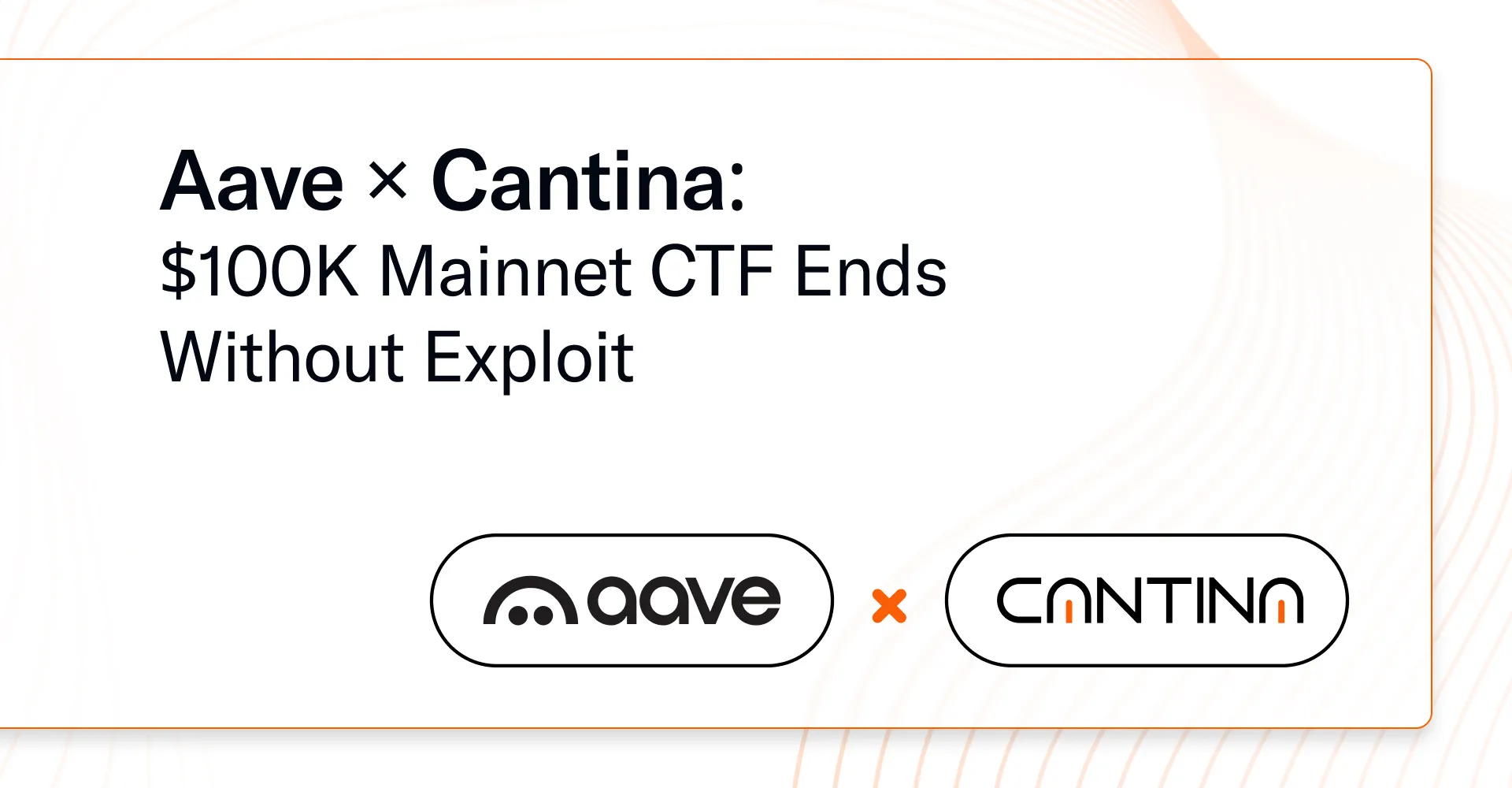Aave is the largest liquidity protocol in the world. Over $60 billion in assets are currently supplied through its infrastructure, supporting lending, borrowing, staking, and liquidity provisioning across hundreds of integrated applications. As one of the most systemically relevant architectures in decentralized finance, Aave’s infrastructure requires not only functional performance but demonstrable resilience.
From June 27 to August 8, Aave collaborated with Cantina to conduct a mainnet capture-the-flag event targeting its deployment on Aptos. The challenge exposed four live contracts to adversarial testing, each provisioned with $25,000 in real liquidity. Hundreds of researchers participated, operating within a controlled, scoped environment purpose-built for direct execution.
The challenge concluded with no successful exploits. Live Aptos contracts, each governing real assets, were subjected to direct engagement by verified researchers. Aave’s infrastructure remained resilient throughout, demonstrating the security standards that leading organizations are expected to meet.
Structure, Scope, and Execution
Participants were onboarded through Cantina’s platform and verified prior to engagement. Once approved, they were granted access to scoped documentation, real contract addresses on Aptos mainnet, and the Cantina interface for exploit delivery. All testing occurred on production infrastructure. There were no abstractions, proxies, or simulations involved.
The architecture under review reflected Aave’s recent expansion mentioned above, including core lending and borrowing logic, interest rate models, and liquidity mechanisms built with Move. This challenge allowed researchers to analyze and engage directly with execution-level components while adhering to predefined constraints. Only confirmed exploits leading to asset extraction from the listed contracts would qualify as valid.
Aave’s Use Case and Technical Relevance
Aave is one of the most widely integrated protocols in DeFi. The system supports a wide range of assets, interacts with complex liquidity flows, and manages substantial user capital across multiple chains.
With the launch of Aave v3.1, the organization has extended both its functional footprint and its architectural reach. The Move implementation introduces new opportunities, particularly around memory safety, resource control, and governance enforcement.
This challenge was designed to assess the implementation of those components. Every contract tested was active and connected to live assets. The logic targeted by researchers was the same logic used to manage risk, execute transactions, and authorize flows in production.
By placing these systems under adversarial observation, Aave advanced the verification of its design from controlled review into observable consequence.
Aave’s Security Model in Practice
Prior to the launch of this CTF, Cantina conducted two security reviews in collaboration with Aave. The first examined the v3.1 upgrade path on EVM chains, including changes to rate strategies, accounting logic, and upgrade mechanisms. The second focused on the Aptos deployment, analyzing its implementation of Move-based primitives, oracle integration, and execution controls.
This challenge represented the next step in that sequence. By converting the findings and feedback from those reviews into an open engagement with production infrastructure, Aave reinforced its commitment to operational transparency and system-level accountability.
Every aspect of this event, from scope definition to researcher onboarding to infrastructure behavior, was structured to meet the standards associated with high-assurance validation.
A Shift in Security Culture
Organizations across the space are adapting to a new standard of security engagement. It is no longer sufficient to rely on private reviews or static tests. High-assurance systems are now expected to undergo adversarial validation in public, with results that can be measured and outcomes that can be verified.
This shift is not solely about transparency. It reflects the competitive landscape of decentralized finance. Market participants increasingly favor protocols that can demonstrate resilience under pressure, not just correctness in theory. Infrastructure that withstands live exploitation attempts under structured conditions earns a degree of trust that exceeds conventional assessments.
Live CTFs represent one method of achieving this. When executed properly, they combine the precision of scoped testing with the unpredictability of real-world behavior.
Industry Implications and Next Steps
The results of this challenge contribute to a broader understanding of what it means to test infrastructure. They reinforce a growing distinction between simulated assurance and real assurance, between assumed outcomes and proven behavior.
Cantina will continue to support organizations that seek measurable validation of their deployed systems. The infrastructure and processes required for this level of engagement are now accessible, replicable, and extensible.
To initiate a structured mainnet challenge or request a high-signal security review tailored to your architecture, contact us.
Security is confirmed through pressure. The infrastructure must respond accordingly.




